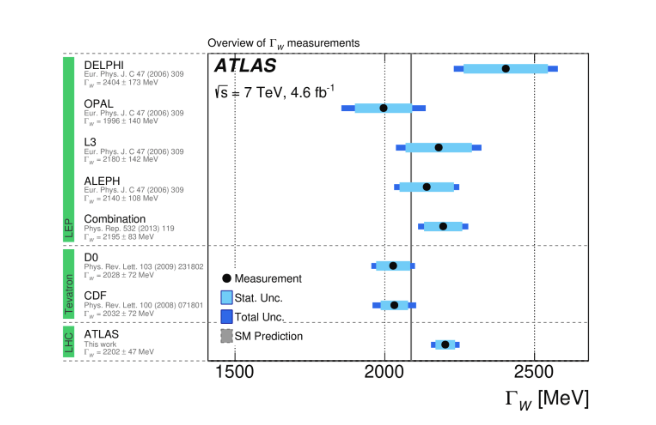ATLAS Breaks New Ground with First Measurement of W-Boson Width at the LHC
Since the groundbreaking discovery of the Higgs boson in 2012, the scientific community has been driven by a quest to uncover the mysteries that lie beyond the confines of the Standard Model. Among the lingering questions are those pertaining to the nature of Dark Matter and the puzzling matter-antimatter asymmetry.

ATLAS Physics Briefing: ATLAS provides first measurement of the W-boson width at the LHC
In this pursuit, the width (ΓW) of the W boson emerges as a crucial parameter. As one of the fundamental force-carrying particles of the weak force, the width of the W boson directly influences its lifetime and decay processes. Any deviation from the predicted value within the Standard Model could potentially signal the presence of new physics phenomena.
In a monumental achievement, the ATLAS Collaboration at the Large Hadron Collider (LHC) has unveiled the first-ever measurement of the W-boson width. Previous measurements conducted at CERN’s Large Electron-Positron (LEP) collider and Fermilab’s Tevatron collider had yielded an average value consistent with the Standard-Model prediction.
Utilizing data collected during Run 1 of the LHC, the ATLAS Collaboration has achieved a groundbreaking precision in measuring the W-boson width, determining it to be 2202 ± 47 MeV. This remarkable achievement represents the most precise single-experiment measurement to date, aligning closely with the Standard-Model prediction within approximately 2.4 standard deviations.
Read the full ATLAS Physics Briefing